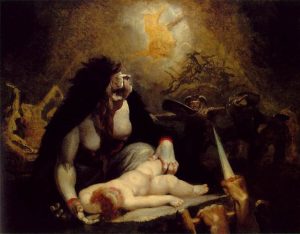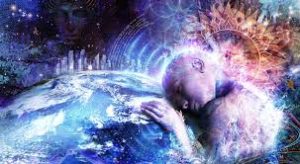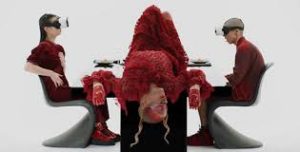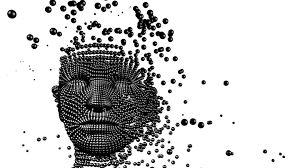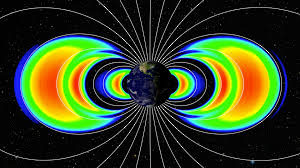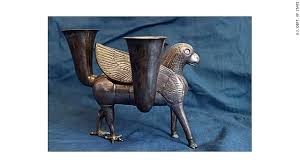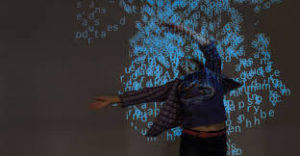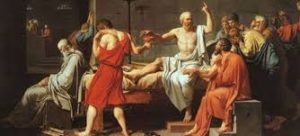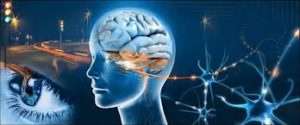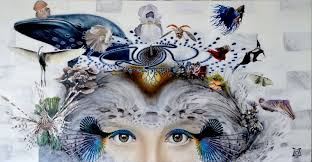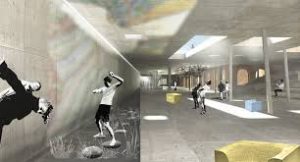It is true, of course, that before the time of modern psychology man and woman had a concept of himself and herself that dealt with conscious exterior aspects only, although it has been written that until that time man and woman thought of themselves as a kind of flat-surfaced self-minus, for example, subconscious or unconscious complexity.
Instead, previous to psychology’s entrance, before psychology mapped the acceptable or forbidden, the dangerous or safe compartments of the self, man and woman used the word “soul” to include his or her own entire complexity. The word was large enough to contain man’s and woman’s experience. It was large enough to provide room for conventional and unconventional, bizarre and ordinary states of mind and experience. It was roomy enough to hold images of reality that were physically perceived or psychologically perceived.
Now the church finally placed all of the condemnation of its religious laws against certain psychological and mystical experiences — not because it did not consider them realities, of course, but precisely because it recognized too well the disruptive influence that, say, revelationary experience could have upon a world order that was based upon a uniform dogma.
“Witches” were not considered insane, for example, or deranged, for their psychological beliefs fit in only too well with those of the general populace. They were considered evil instead. The vast range of psychological expression, however, had some kind of framework to contain it. The saint and the sinner each had access to great depths of possible heroism or despair. Psychological reality, for all of the religious dangers placed upon it, was anything but a flat-surfaced experience. It was in fact because the church so believe in the great range of psychological activity possible that it was so dogmatic and tireless in trying to maintain order.
Unfortunately, with the development of scientific era, a development occurred that need not have happened. As I have mentioned before, science’s determination to be objective almost immediately brought about a certain artificial shrinking of psychological reality. What could not be proven in laboratory was presumed not to exist at all.
Anyone who experienced “something that could not exist” was therefore to some extent or another deluded or deranged. There is no doubt that the accepted dimensions of psychological reality began to shrink precisely at the time that modern psychology began. Modern psychology was an attempt to make man and woman conform to the new scientific world view.
It was an attempt to fit man within the picture of evolution, and to manufacture a creature whose very existence was somehow pitted against itself. Evolutionary man and woman, with Darwinian roots, could not be a creature with a soul. It had to have hidden in its psychological roots the bloody remnants of the struggle for survival that now cast the soul in a position of stress, caught as it was between its heavenly source and original sin — but there was a sense of psychological mobility involved, one that saw continued existence after death.
The new psychology shut off mobility after death, while giving each individual an unsavory primitive past heritage — a heritage genetically carried, that led finally only to the grave. Psychological activity was scaled down in between life and death, then, even while the possibility of any after-death experience was considered the most unreasonable and unintellectual of speculations.
Any man or woman might rise in our democracy from a poor peasant’s son to be the President. Outcasts might become the socially prominent. The unlettered might become highly educated. The idea of achieving greatness, however, was considered highly suspect. The self was kept in bounds. Great passion, or desire or intent — or genius — did not fit the picture.
Now some peoples would not fit into that mold. They would take what they could from our technology, but in conscious and spontaneous ways they retaliated — and still do — by exaggerating all of those human tendencies that our society has held down so well. If we can have reason without faith, then indeed, for example, we will see that there can be faith without reason. When human experience becomes shrunken in such a fashion — compressed — then in a fashion it also explodes at both ends, one might say.
We have atrocious acts committed, along with great heroisms, but each are explosive, representing sudden releases of withheld energies that have in other ways been forbidden, and so man’s and woman’s mass psyche expresses itself sometimes like explosive fireworks, simply because the release of pressure is necessary.
Even our poor misguided moral/religious organization is saying in it’s fashion to the scientifically-oriented society: “How is faith not real, then? We’ll change your laws with it. We”ll turn it into power — political power. What will you say then? We have been laughed at for so long. We will see who laughs now.”
Fanaticism abounds, of course, because the human tendencies and experiences that have been denied by the mainline society erupt with explosive force, where the tendencies themselves must be accepted as characteristics of human experience. Iran is an example for the world, in explosive capsule form, complete with historical background and a modern political one. Modern psychology does not have a concept of the self to begin to explain such realities.
Now, in the world we early formed our own beliefs and strategies. In midlife we are presented with a recognized overall vitality of materials. This is mean to reorient our attitudes. Some don’t realize, that we are not merely being presented with an alternate view of reality, but with the closet approximation we could get of what reality is, and how it worked, and what it meant.
I have been very gentle in my treatment of our mores and institutions — for I do not want to be against our world, but for a more fulfilling one. In future blogs I will be discussing how our ideas can be applied by the individual in terms of value fulfillment, so that individuals can begin to reclaim those dimensions of experience that are indeed our right heritage.
For my blog readers, I want them to remember the idea of effortlessness, because with the best of intentions some have been trying too hard. I want them to remember that relaxation is one of creativity’s greatest champions — not its enemy. He or she is naturally gifted with the quickness of body and mind. Remind oneself that it is safe to express his or her natural rhythms, to remember the natural person. Our most vital inspirations are effortlessly ours. I want us to see how many of our beliefs are the result of the old framework, for in that way we will find ourselves releasing ourselves ore and more, so the our own strengths come to our support.



